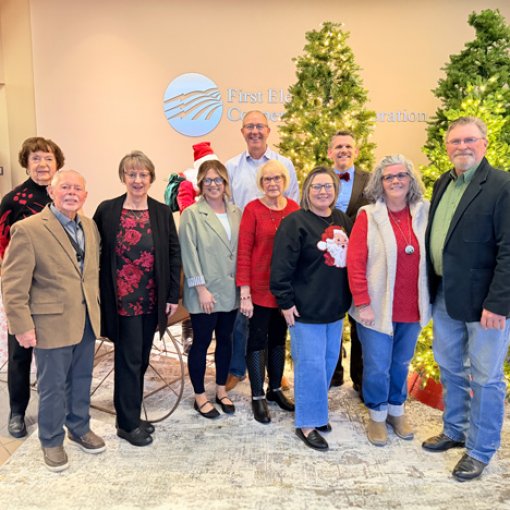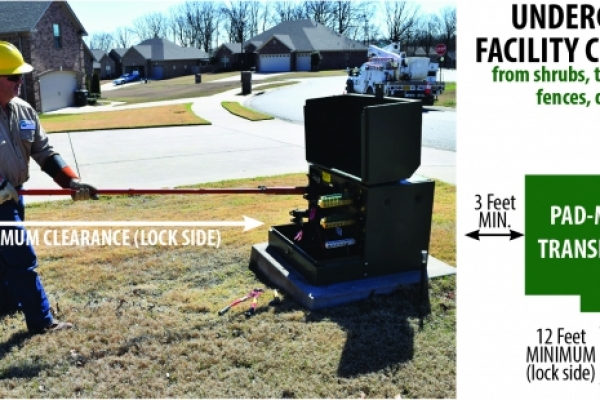

Tree Planting Guide

Trees are one of the major causes of power outages in areas with overhead utility lines. When trees contact live wires, they may become conductors of electricity and cause power outages or create dangerous situations for anyone coming in contact with them.
First Electric works hard maintaining its right-of-way near overhead lines to provide safe and reliable electrical service. Ideally, no trees would be planted within our right-of-way with overhead lines or within 10 feet of our underground transformers.
Native species often will grow better with fewer insects and disease problems than non-native trees. For areas near houses and overhead utilities, there are four tree height zones.
Tree Height Zones
Before you plant, call Arkansas 811 at least 48 hours in advance (not counting weekends and holidays) to have your underground utilities marked at no charge.
Trees planted within First Electric’s easement (15 feet on either side of power lines) will have to be removed once trimming becomes necessary. All trees along fences, roadways and other unmaintained areas will be removed during regularly scheduled maintenance regardless of size or height.

Tree Planting Guide

Underground Facilities Clearance
As a part of a regularly scheduled maintenance program, First Electric clears vegetation from its right-of-way. As a follow-up to this maintenance, the cooperative will apply herbicides to portions of its overhead right-of-way that support tall-growing trees and shrubs. This herbicide application is performed by licensed and trained applicators with backpack sprayers. Additionally, our vegetation management personnel closely monitor this work.
The herbicide application process does not affect those members who have underground electric lines on their property. Also, no herbicides are applied to lawns, gardens, pastures, croplands or other maintained areas.
More about herbicides
First Electric’s tree pruning practices conform with the procedures set forth by the American National Standards Institute. These standards require the use of directional and natural pruning methods, which are endorsed by the Tree Care Industry Association, the National Arbor Day Foundation and the International Society of Arboriculture.
Natural pruning is the practice of pruning branches back to a natural point of growth in the crown of the tree. Natural pruning is healthier than tree topping, which is the indiscriminate cutting back of tree branches to reduce the size of the tree crown. Although topping generally leaves the tree with a more balanced appearance, the International Society of Arboriculture refers to topping as "perhaps the most harmful pruning practice known." Topping stresses trees, makes them more vulnerable to insects and disease infections and leads to decay. By planting trees and shrubs away from power lines, you can help eliminate the need for pruning in the future.
Directional pruning removes only those branches that conflict with the power lines. Instead of cutting the limbs back to unnatural stubs, branches are pruned back to the trunk or parent branch where trees normally shed them. V-pruning and side pruning are the two main variations of directional pruning. Trees may look a bit different after directional pruning.
A member who has a dead tree within the cooperative’s right-of-way may call 800-489-7405 to have one of the cooperative’s utility arborists assess whether it needs to be removed. If the utility arborist determines the dead tree is endangering First Electric lines or equipment, then a right-of-way crew will cut the tree at no charge to the member. The crew will cut the tree into firewood-size pieces for disposal by the member.